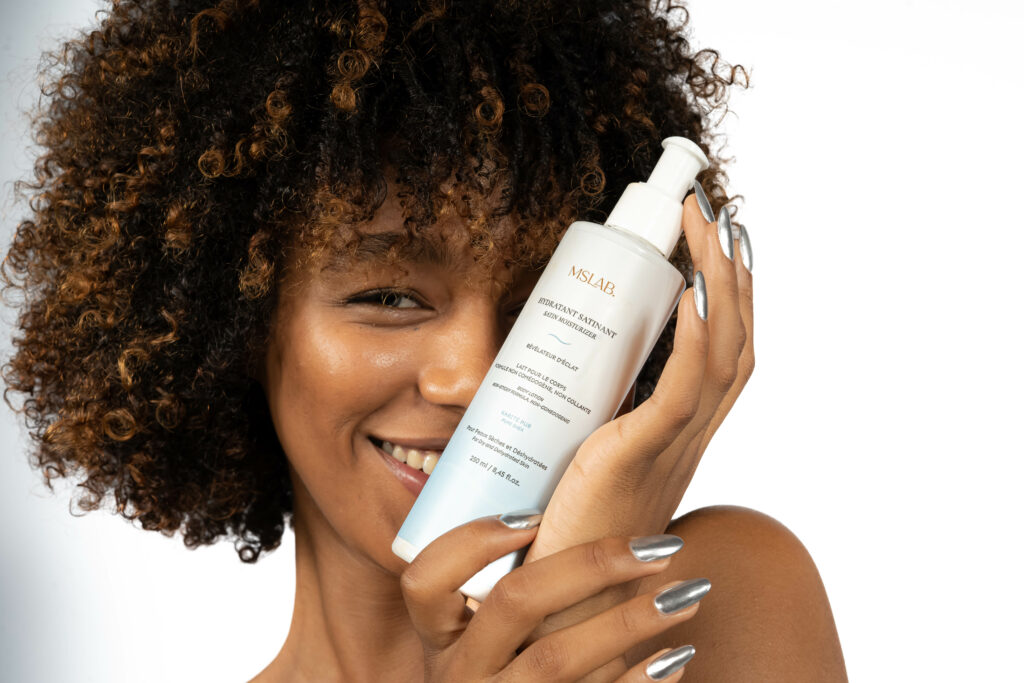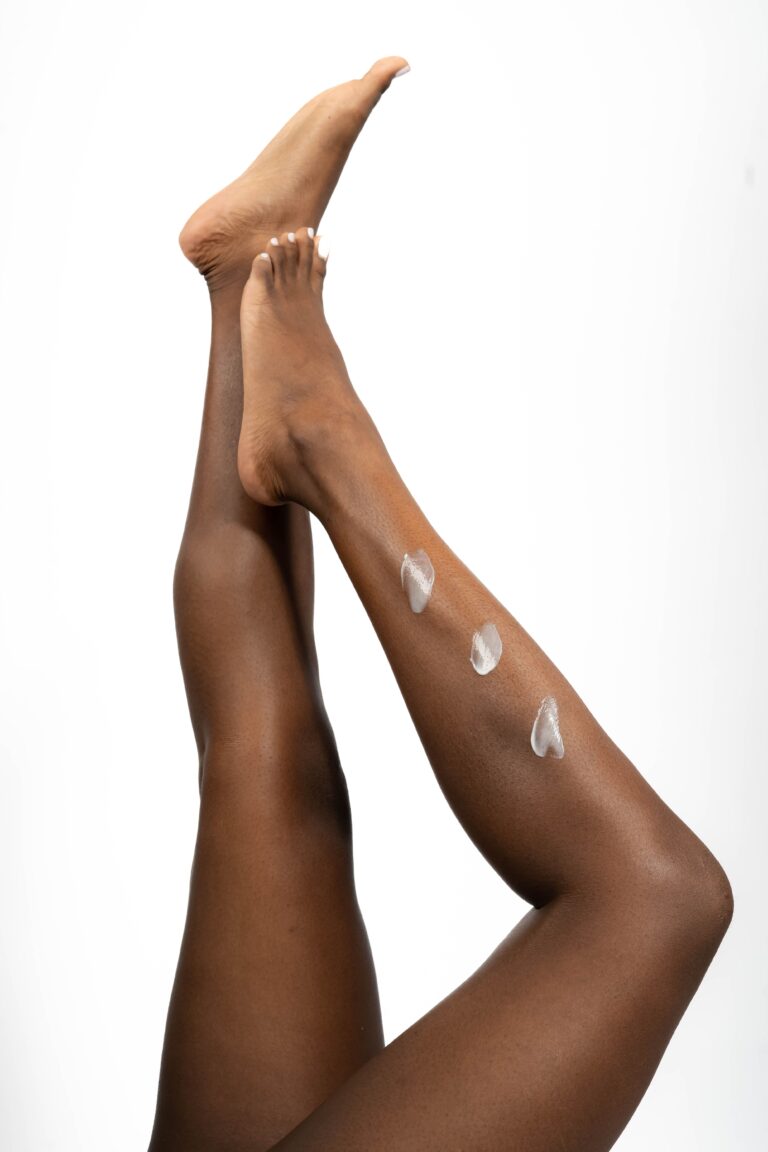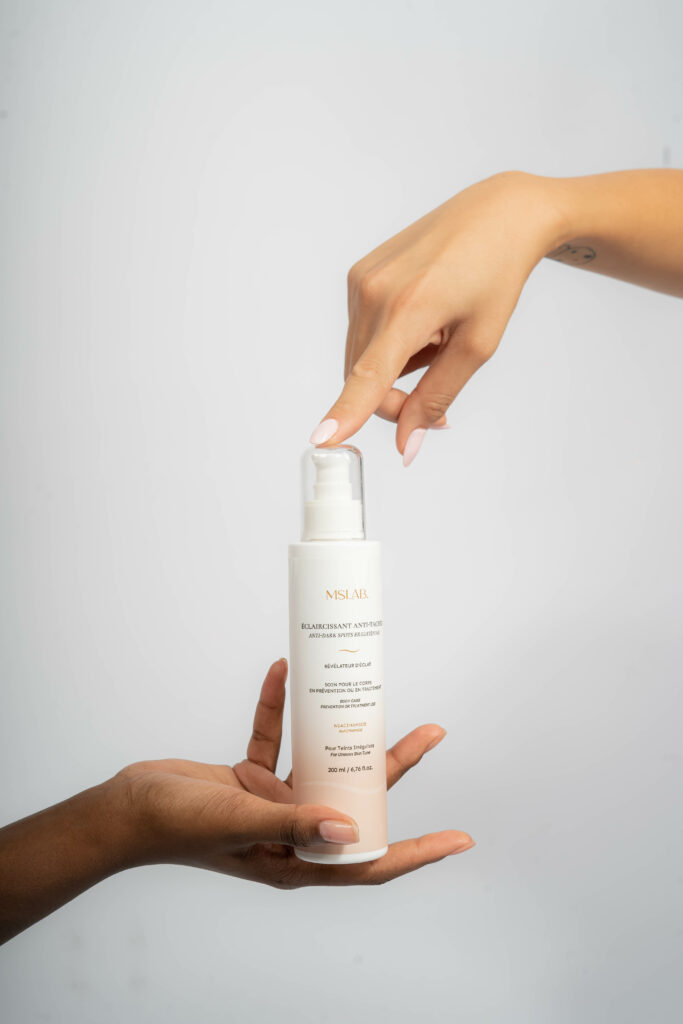While medium to dark skin is known to better withstand the sun’s rays, it is not exempt from their harmful effects. Contrary to popular belief, pigmented skin is highly reactive to external aggressions, making it vulnerable to skin irritations and prone to pigmentation disorders. In this article, we will explore what constitutes medium, mixed, or dark skin, and what are their characteristics.
But what is a medium, mixed, or dark skin?
Thomas B. Fitzpatrick, a dermatologist from Harvard, classifies different skin tones into Phototypes (from 1 to 6), with medium to dark skin corresponding to the higher phototypes.

Medium skin corresponds to Phototype 4: tanning ranges from light to dark, sunburns are occasional to rare, with a more or less elevated risk of hyperpigmentation (appearance of dark spots darker than the surrounding area).
Mixed skin corresponds to Phototype 5: tanning is dark, sunburns are rare, and the risk of hyperpigmentation is high.
As for dark skin, it corresponds to the highest phototype, Phototype 6: tanning is dark to black, no sunburns occur, with a very high risk of hyperpigmentation.

Medium to dark skin is very fragile and sensitive to external aggressions. The main characteristics of these skin types are skin dehydration, a high risk of dark spot formation, and a dull complexion.
Dry and naturally dehydrated skin
Medium, mixed, and dark skins are primarily characterized by a skin barrier (hydrolipidic barrier) that no longer fulfills its protective function.
As the name suggests, a failing hydrolipidic barrier lacks water (hydro) and lipids (lipidic). In the absence of the protective film normally formed by lipids, water quickly evaporates from the skin, instantly dehydrating it. This high potential for water loss manifests as a feeling of tightness, discomfort (especially after a shower), and sometimes itchiness.
Skin dehydration affects millions of people, especially in winter, and is most pronounced on the legs.
Being more vulnerable to external aggressions, daily and appropriate hydration is necessary for treating this type of skin. Opt for moisturizing lotions rich in emollients and occlusives, such as MSLab’s Satin Moisturizer Body Milk. Made with shea butter, glycerin, and sesame oil, it is specially formulated to restore the skin barrier, bringing softness, comfort, and flexibility to your skin.

... prone to pigmentation spots (dark spots),
These are dark spots darker than the surrounding skin. The main causes of hyperpigmentation are post-inflammatory or hormonal: hormonal imbalance (pregnancy mask); skin traumas such as injuries, acne, ingrown hairs, eczema; prolonged and repeated sun exposure.
All areas of the body are affected: face, neck, back, arms, legs. These dark spots tend to persist over time, never disappearing if not treated. They will be even more pronounced if exposed to the sun. The unattractive appearance of the skin naturally causes discomfort.
It is advisable for medium, mixed, and dark skins to be extra vigilant about the appearance of these spots. In addition to sun protection, daily care is necessary. MSLab’s Anti-Dark Spots Brightening Body Care, highly dosed with Niacinamide, has a moisturizing and clarifying/unifying effect. It not only lightens dark spots but also prevents their reappearance.


... and a complexion appearing dull
The accumulation of dead cells on the skin’s surface gives it an uneven and rough appearance. The skin tends to reflect light less evenly, losing its natural brightness with a dull or even grayish complexion. This phenomenon is observed mainly in friction areas, namely elbows, knees, and heels. An exfoliating body scrub is recommended to smooth and refine the skin texture. Opt for rather fine exfoliating agents to avoid irritating the skin, such as coffee or rice powder. MSLab’s Exfoliator Skin Enhancer Body Scrub, with healing honey and fine exfoliating rice particles, will gently rid you of dead cells and a dull complexion.

Medium, mixed, and dark skins are particularly sensitive and reactive to external aggressions. Naturally dehydrated skin with a high risk of dark spot formation hinders luminous skin. Adopt a suitable and daily body beauty routine. An essential step to maintain radiant and comfortable skin throughout the year. So? Ready for perfect skin?
Réference :
- Sylvie Rubal. Conseil officinal appliqué à la dermatologie et à la cosmétologie des peaux hyperpigmentées : enquête auprès des pharmaciens. Sciences pharmaceutiques. 2013. ffdumas-00917127ff
- Valery Freeman ANGOUNOU. Thèse : Spécificités des peaux noires et métisses. Faculté de Pharmacie de Lille (Juillet 2020).



0 comments on Medium to Darker Tones Caracteristics